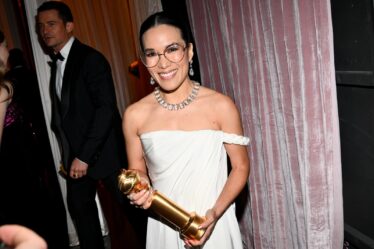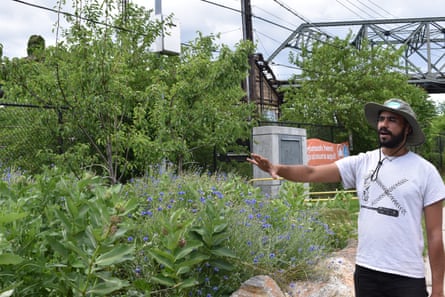
On a crisp November day in the South Bronx, more than 300 people made their way from Westchester Avenue below the clamor of the 6 train down a tree-lined path leading to Concrete Plant park. This is the home of the Bronx River Foodway, a quarter-acre food forest full of edible, mostly native plants. What looks like a stretch of land dotted with trees appears at first glance to be overrun by weeds, but the wild foliage has been intentionally planted by the Foodway. It is the only legal foraging site in New York City.
Neighbors young and old poured on to the grassy banks of the Bronx River to celebrate the end of the season and the foliage of the Bronx, including an array of snacks made from foraged ingredients: ginkgo cheese and acorn crackers, and pickled mushrooms and herbal ales made at recent four-part cooking series put on by the Foodway over the last two months.
The classes are part of the Foodway’s educational programming. Previous virtual classes covered how to safely forage; how to start indoor gardening; how to cook with lamb’s quarter, an abundant drought-tolerant plant with edible kale-like leaves and seeds comparable to quinoa; and how to identify medicinal herbs for respiratory health.
“We live in what’s called the asthma triangle because of all the highways and industrialization of the South Bronx. Many of the plants that grow the Foodway are remedies for respiratory issues,” says the Foodway’s coordinator, Nathan Hunter, the only full-time city parks employee at the Foodway. He sees it as an oasis for residents of the industrial part of the Bronx framed by the historic silos from the former concrete factory. Foragers can take as much as they want, whenever they want, day or night.
“Within the Black community, we don’t always trust the medical system,” says the artist-in-residence Journei Bimwala, an herbalist, forager and educator. Instead of shaming people for that lack of trust, she offers asthma remedies from the food forest, such as New England aster.
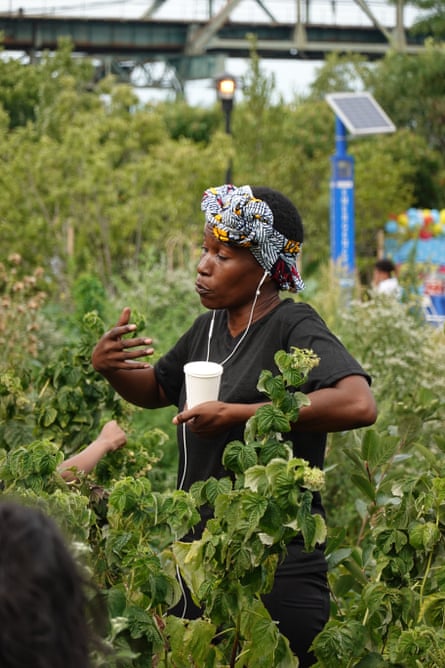
Offering a safe space to forage legally and for free in a mostly low-income and non-white area could be seen as a radical practice, especially in a city where collecting or destroying plants in public parks can result in a fine of up to $200. The Foodway was created in 2017 in partnership with the Bronx River Alliance, a non-profit dedicated to the reclamation of the Bronx River that runs the Foodway with the city parks department; since then, the Foodway’s evolution has been driven by the community. Hunter says he often encounters curious locals exploring Concrete Plant Park, who who greet him with questions about the space. These exchanges, especially with older generations, help Hunter shape the Foodway to fit the needs of the community.
The Foodway team is using the winter to plan ways to keep the community engaged in foraging off-season. So far, they’ve come up with a three-part mushroom series: a walk to identify mushrooms, led by Bimwala; a workshop on mushroom cultivation; and the finale, a hands-on course to grow mushrooms from a spawn bag using coffee grounds. They will also continue their soil testing program in partnership with Cornell University – Hunter and his team test the soil of the Foodway with an X-ray machine that identifies toxic materials to make sure the foliage is safe to consume. Local people are invited to bring soil from their yards to be tested.
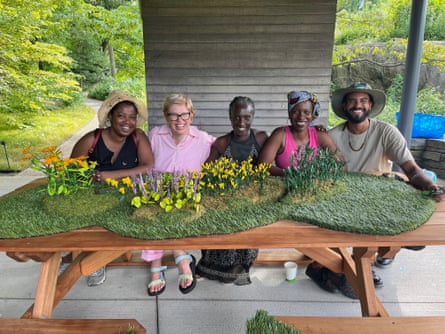
In his first year as coordinator, Hunter spotted Bimwala leading a tour, teaching children about the properties of each plant. “It made my heart sing because that was exactly what the Foodway was meant to do,” says Hunter.
Bimwala leads free weekly tours from spring to fall for community members, who come in dozens with baskets to take home what they find. As she nimbly makes her way through the Foodway, she stops to inspect a plant with long, fuzzy fuchsia flowers drooping with tiny seeds. “This right here is amaranth,” she says, loosening the seeds between her fingers. “In Black communities it is also known as callaloo and the seeds are used like popcorn. You can cook the greens, use them in a salad, and put them in your smoothie.” Bimwala names a range of medicinal and edible plants growing along the path as she continues: common plantain, elderflower bushes, goji berries, and a plethora of herbs with medicinal qualities.
The city has no plans to legalize foraging on a wide scale, but Hunter hopes that the Bronx River Foodway can serve as a model for the rest of the city parks. Bimwala and Hunter say it is time for the city’s laws to evolve and offer approaches including a certification system and limits on when and what can be foraged, to protect against over-harvesting.
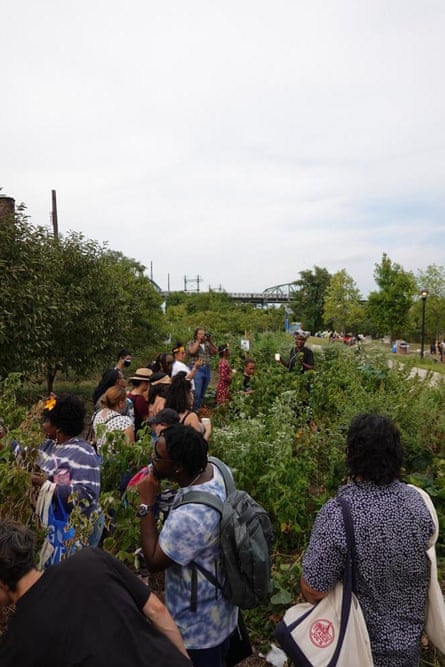
The city argues that if foraging were legal everywhere, it would harm the urban ecosystem. “On a large scale, New York City parks would not be able to sustain large amounts of urban foraging – plants and their bounty could be wiped out easily depending on their popularity and the number of foragers,” says Dan Kastanis, who handles communications for the parks department.
Instead, Kastanis encourages people interested in foraging to join one of the city’s more than 550 GreenThumb community gardens, which provide neighborhoods access to free garden space, training and resources.
Foragers say that there would never be a problem with over-foraging because digging around in city parks for leafy greens, nuts and berries simply isn’t for everyone. On top of that, the foragers leading the movement say that their walks include education about how to sustainably forage.
Bimwala and Hunter agree on the need for a foraging stewardship certification program, possibly supported by an organization like the New York Botanical Garden, which already offers educational classes, including an urban naturalist course.
“I want to create a space for foragers,” says Hunter, envisioning a “community who are curious about how foraging can exist around the city while recognizing the limits of public lands”.

